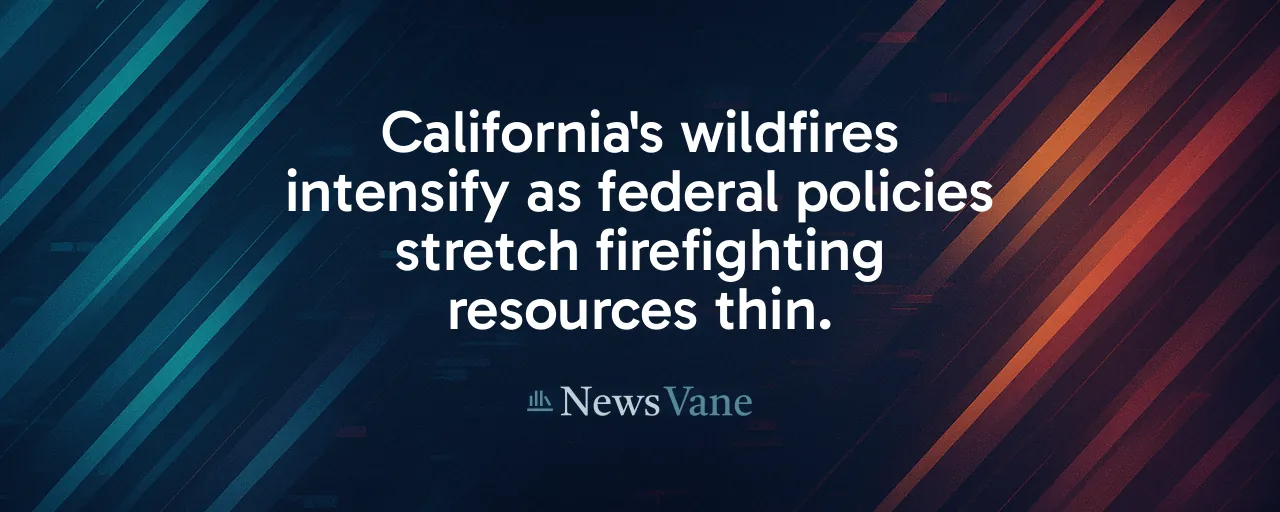A State on the Front Lines
Wildfires are reshaping California's landscape, with 2025 already marked by devastation. The Palisades and Eaton fires claimed 28 lives and destroyed over 16,000 structures, burning 450,000 acres. As peak fire season looms, a new hurdle emerges: federal policies are stretching the state's firefighting resources thin.
Governor Gavin Newsom has launched an ambitious recruitment campaign for CAL FIRE, the state's leading firefighting agency. A dedicated website now guides applicants toward careers in firefighting, natural resource management, and support roles. This effort arrives at a pivotal moment, as federal budget cuts and the reassignment of National Guard crews to Los Angeles armories challenge California's ability to protect its communities.
The urgency is palpable. Climate change is driving fiercer fires, fueled by hotter temperatures and drier conditions. California is responding with determination and ingenuity, but the strain of federal decisions raises critical questions about how the state can maintain its defenses.
Navigating Federal Priorities
Recent federal actions have complicated California's wildfire response. Approximately 300 National Guard fire crews, representing three-quarters of the state's Guard firefighting capacity, have been redirected to armories in Los Angeles for immigration-related tasks. This significant reduction weakens a vital layer of the state's fire suppression efforts.
Proposed federal budgets for 2026 target the U.S. Forest Service, threatening 3,400 jobs and halting $113 million in fuels-reduction projects. These cuts recall earlier federal retrenchments, such as the 2013 sequestration, which pushed California to bolster its own funding. The state has invested $2.5 billion in wildfire resilience since 2020, with another $1.5 billion allocated from a 2024 Climate Bond. However, the 57 percent of California forests under federal management remain a critical gap when federal support wanes.
Perspectives on federal roles vary. Some policymakers advocate limiting FEMA's disaster aid to 75 percent for most events, arguing states should take on more financial responsibility. Conversely, supporters of the proposed FEMA Act of 2025 seek to strengthen FEMA's authority while encouraging state-level mitigation investments. This ongoing debate leaves California adapting to a shifting federal landscape as fire risks escalate.
CAL FIRE's Push Forward
CAL FIRE is rising to the challenge by expanding its workforce. From 5,829 personnel in 2018, the agency now employs 10,741, adding 1,800 full-time and 600 seasonal positions annually – nearly double that from the previous administration. Plans are in place to hire 2,400 additional firefighters over the next five years. The new recruitment website provides clear information on diverse roles, from frontline firefighting to technology and planning positions.
Attracting talent is no small task. Firefighting requires extensive training, with paramedic certifications costing over $25,000 and often demanding candidates leave other jobs. Nationwide, fire service recruitment is declining, and smaller local departments struggle to match CAL FIRE's resources. The state is testing shorter workweeks and agency-funded training to improve retention, but building a robust workforce remains a complex effort.
Technology offers a lifeline. CAL FIRE employs AI-driven cameras, satellite heat detection, and night-capable helicopters to enhance fire response. Real-time dashboards prioritize fuel treatments, while drones and autonomous aircraft improve suppression precision. These tools are essential as wildfires grow increasingly erratic.
Strengthening the Homefront
California's strategy extends beyond firefighting to prevention. Since 2021, the state has treated nearly 1.9 million acres to reduce fire risks, including 730,000 acres in 2023. A recent $72 million investment funds projects to curb catastrophic blazes, and 13 vegetation management initiatives spanning 7,000 acres are being expedited. These efforts align with a 2021 action plan and a 2025 emergency proclamation to streamline forest management.
Collaboration with federal partners is vital, as over half of California's forests are federally managed. Proposed cuts to $646 million in FEMA preparedness grants and reduced federal fuels work create obstacles. Some argue states should bear greater costs to encourage fiscal discipline, while others emphasize that federal resources are crucial for equitable disaster response, given that 94 percent of Americans live in counties that have relied on FEMA aid since 2011.
Charting the Path Ahead
California is forging ahead, balancing recruitment, technology, and prevention against federal constraints. The CAL FIRE campaign is a proactive move, but its success hinges on drawing committed professionals in a competitive field. Every new firefighter strengthens the state's resilience.
The state-federal dynamic reflects a broader national conversation about disaster response. As climate-driven wildfires intensify, cooperation between state and federal agencies will be essential. California's innovations, from satellite monitoring to community hardening, provide a foundation, but scaling them requires federal partnership.
For Californians, the fight against wildfires is a shared endeavor. Each treated acre and trained firefighter bolsters the state's defenses. As the fire season unfolds, the resolve to protect communities remains unwavering, grounded in the hope that collective action can meet the challenges of a warming world.
